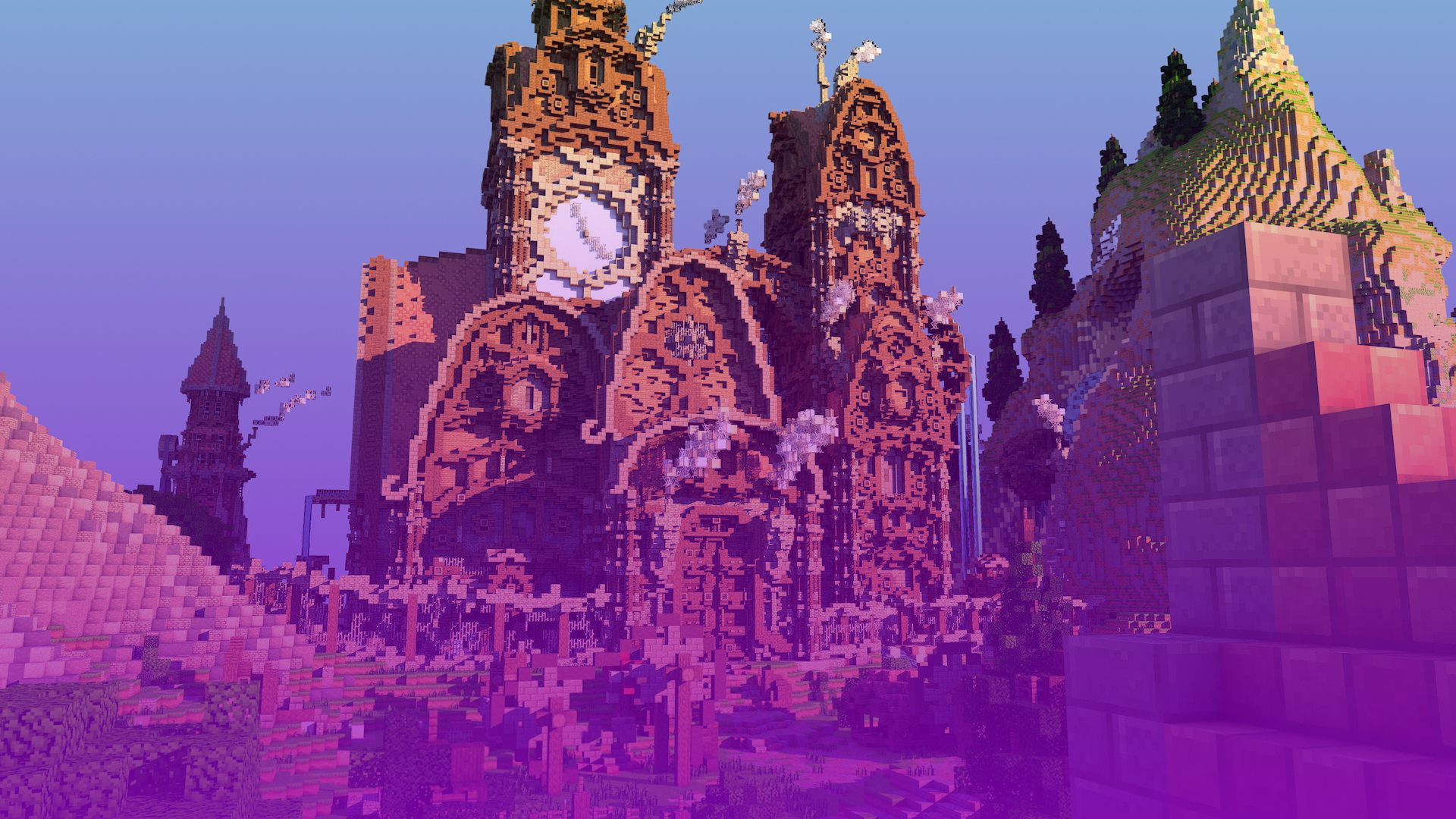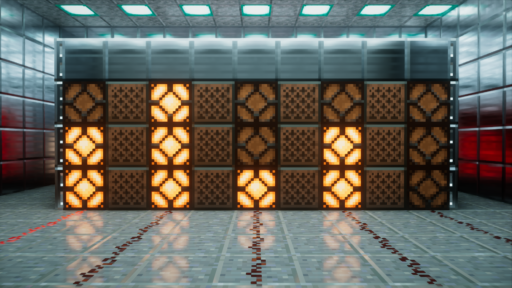When you log into a Minecraft Server for the first, you are greeted with what feels like a sensory overload. The public chat immediately fills up with conversations you can’t make heads or tails of, colored usernames and guild tags float above the pixelated avatars of popular YouTubers. A grand and often massive lobby rests in front of you, with portals or menus leading to a variety of minigames. Dozens of players jump around entering and exiting. These servers are simply an extension of Minecraft, but for many players, the game itself. It is the beating heart of the multiplayer scene of the best selling game of all time.
The history of Minecraft’s multiplayer is a collection of eras, defined by some of the most Iconic servers. To understand the journey and road that has led us to what multiplayer servers are today, we have to look back and map their evolution.
A Living Museum: Minecraft Online
On August 4, 2010, Mojang released Minecraft Alpha 1.0.15. The first public version of survival multiplayer. Within an hour of its release, a user known as “SlowRiot” registered the domain MinecraftOnline.com and, with help of another user “runechan”, created a world named “Freedonia”. It was one of the very first, and the longest running Minecraft Server to date.
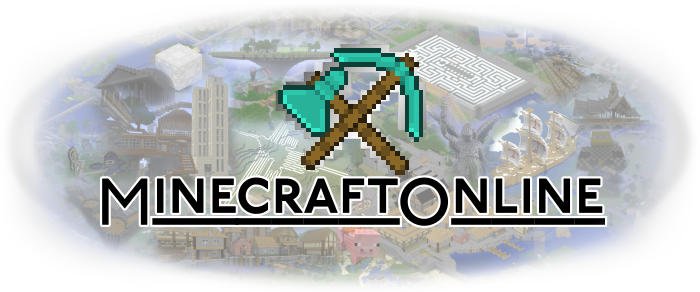
A World Never Reset
The core identity of this server is that: the world has never been reset. This has made Freedonia a unique piece of digital history. Early builds from 2010, like the Riot Spawn Castle and the first player-made cities still exist, sometimes scarred or modified by over a decade of history. The world file, over 26GB as of October 2021 (that’s pretty large for a Minecraft world), contains the digital ghosts of every player who has ever built, mined or explored.
The longevity was a conscious choice. From its inception, MCO established rules and deployed a staff team to protect player creations, a stark contrast to the philosophy adopted by some of its contemporaries (We’ll get to that in a moment), Griefing is considered a bannable offense, and the server’s ban numbers reflect the players having to deal with the consequence of it; over 52,000 players have been banned over the years. As a result, the community has fostered a culture of preservation. They maintain a detailed wiki, chronicling server events with a surprising degree of precision, documenting everything from the “May Unrest” griefer invasion of 2011 to the “April Fools 2020” event, where a popular YouTuber called FitMC made a video on the server, causing the server to reach its player cap for the first time in its history.

Historical Significance
MCO’s significance is not that it has a massive playerbase, but as a museum, preserving the creations of its players. The early version history closely mirrors that of Minecraft’s own development, Alpha 1.0.15 to Release 1.7.10, where it remained that way for six years. In April 2021, they made the jump to 1.12.2 and since then stayed on the version.
The inception of MCO and the founding of 2b2t just a few months after, highlighted the schism that was inevitably occurring in the Minecraft Multiplayer communities. One, a structured, community focused, and preserved survival experience. The other, unmoderated chaos.
No Rules: 2b2t
Created in December 2010 by “Hausemaster” and “georgebush420”, 2b2t (2builders2tools) had a very different idea behind it than MinecraftOnline. The idea traces back to a Garry’s Mod server with a similar anything-goes policy, and it was deliberately advertised in more anarchic corners of the internet like 4chan and Reddit. It is important to note that 2b2t did not become chaotic, the entire idea was to see how much destruction could be caused from day one.

The Anarchic Environment
The server’s most important promise is the near absence of rules. Griefing, modified clients and offensive language were not only permitted, but a staple of the server’s inhospitable and nihilistic culture. Like MCO, the world map has never been reset. However, instead of a museum, it is a war-torn and apocalyptic landscape. The spawn area is a cratered wasteland, perpetually lavacast and filled with obsidian. The biggest challenge for new players is escaping the starting region.

Major Events
For years, 2b2t had an infamous yet niche community. That changed on June 1st, 2016. A Youtuber called TheCampingRusher uploaded a video of him playing on the server, which triggered a massive influx of new players, dubbed “Rushers”, who were viewed as an existential threat by the long-time veterans. The resulting conflict was known as the “Rusher War”. There were massive battles, formation of new factions like Team Veteran, and the introduction of the player queue system to handle the thousands of players trying to log in.
The history of 2b2t is written in player-driven epochs: incursions designed to control spawn, wars between factions, and discovery followed by eventual patching of game-breaking duplications glitches that shattered the server’s economy over time. The timeline is marked by the rise and falls of bases like Valkyria and Imperatator’s Base, and by the discovery of exploits such as the legendary “Nocom”, a method of tracking player coordinates that was used by a select group for years to raid and destroy hundreds of bases. Thus demonstrating the power of information in servers such as these.
2b2t serves as an unintentional, long running social experiment. By removing nearly all external authority, it created a digital state of nature. And even so, there are many examples of emergent order. There have been highly organized groups, long term collaborative projects such as the Nether Highway system and even attempts at historical preservation efforts like “The Archive”, a separate server that saves world downloads of 2b2t’s most famous builds. All of this goes to show that even in a supposedly lawless environment, players naturally form social structures, hierarchies and enduring goals. The culture of 2b2t may be brutal, but it is still a culture. This server demonstrates what happens when communities are left to govern themselves entirely.
The Giant: Mineplex
Mineplex was a pioneer of the “Minigame Network” model that would come to dominate the Minecraft multiplayer scene. It was founded in January 2013, by Gregory Bylos (Sterling_) and Jarred van de Voort (Spu_). Instead of a single persistent world; it was a dynamic hub for dozens of fast-paced replayable games. Early hits like Castle Siege, Bridges and its own version of Survival Games were polished and innovative for its time, fueling the server’s initial growth.

Growth and Popularity
Mineplex’s sudden rise to fame can be attributed to YouTube. The ownership team, particularly Spu_, actively contacted Content Creators. His strategy proved fruitful when he managed to land a partnership with a massive YouTuber CaptainSparklez, who became a part of the ownership team and heavily promoted the server to his millions of fans. The effect was explosive. On the 28th of January 2015, Mineplex set a Guinness World Record for “Most Popular Minecraft Server Network” with 34,434 concurrent players. For a brief moment, it was the undisputed king of Minecraft multiplayer.
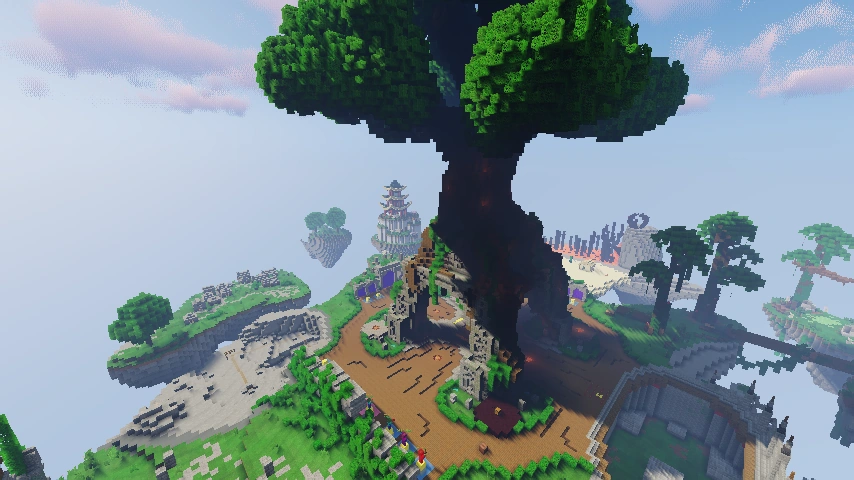
Decline and Shutdown
The fall of Mineplex was not a single event but a slow decay stemming from internal strife and a failure to adapt. The server was plagued from the start by disorganization and a “Spaghetti” codebase that made updates difficult and bugs common. The original founders gradually stepped away or were pushed out, leaving a leadership vacuum and a team that was struggling to manage the massive network. While Mineplex stagnated, its primary competitor, Hypixel, was aggressively innovating. Mojang’s 2014 EULA enforcement was not helping matters for Mineplex, they cracked down on pay-to-win mechanics, which severely impacted Mineplex’s revenue model. The same year, co-founder Spu_ was pushed out due to over-promising features to content creators and CaptainSparklez later stepped away. The killing blow came when Hypixel introduced Bedwars in 2017; Mineplex’s copycat version arrived nearly a year later and failed to capture the hype. Later down the line, YouTubers began to highlight the server’s rampant hacker problem, further damaging its reputation and driving players away.
Player counts dwindled for years. On May 11, 2023, the once heralded server went offline without warning and was officially declared shut down days later. Shortly after, former admin Sam “Samito” Dawahare announced that he had acquired the company and planned a revival. As of May 2025, the new Mineplex is in closed beta, a shadow of its former self.
Enduring Empire: Hypixel
Hypixel had fundamentally different origins to its rival. It was started on April 13 2013, a few months after Mineplex, and began as a YouTube channel showcasing custom adventure maps like “Herobrine’s Mansion”. The server was created to allow fans to play these maps together. Minigames that would become the network’s claim to fame were originally just a side activity for players waiting in the lobby for the main adventure to start.

Key Minigames
Three games propelled Hypixel to its meteoric heights. They became a cultural phenomena and a staple in Minecraft minigames. First was Skywars in June 2015, a simple game where players would spawn on separate floating islands and fight to the death. Second was Bedwars in January 2017, team based game where the goal was to destroy all your opponents beds to prevent them from respawning and eliminate them. It exploded in popularity and became the key driver in overtaking Mineplex. Finally, there was Hypixel Skyblock in June 2019. It was not just a minigame, it was a full fledged MMORPG-lite experience with its own economy, skills and endless progression. It drew in tens of thousands of players and retained a large section of them, often accounting for half the server’s online population.
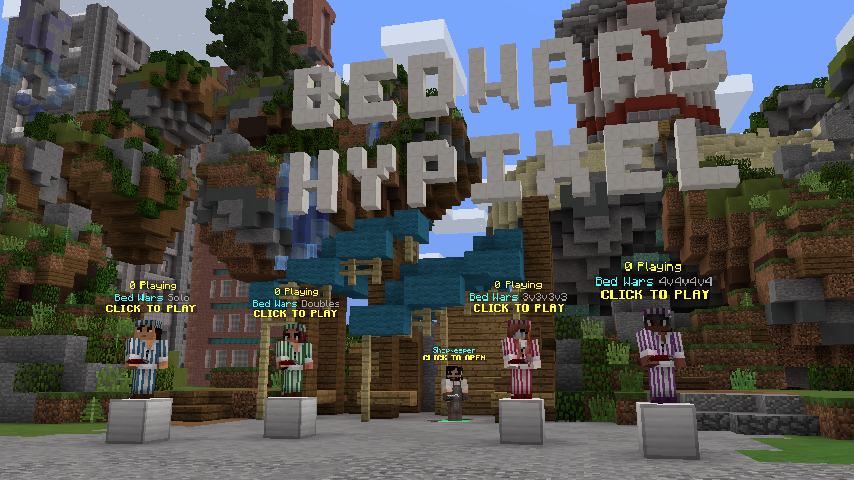
Development and Community
The success of Hypixel was built on a strong foundation of community feedback. Unlike Mineplex’s often buggy releases, Hypixel maintained a reputation for polish and continuous updates. A “prototype lobby” was introduced in early 2017, an intelligent way to allow some players to beta test new games, gather feedback and build hype before a full release. This process ensured that new games were well received and balanced. Hypixel was able to successfully navigate the EULA issue by focusing on a cosmetic monetization model, and thus being able to maintain funding its massive $100,000 per month operating costs without upsetting game balance. This revenue was then cycled back into the server with more developers and better infrastructure, which helped survive major DDoS attacks in 2018 and 2021.
The founders were able to establish Hypixel studios and begin development on a standalone game, Hytale. The project’s ambition grew and the studio was acquired by Riot Games in April 2020. Unfortunately, the scope continued to mount and in June 2025, after 6 years of development and 4 rewrites, they announced that Hytale was cancelled and the studio was shutting down. As of August 2025, Simon of Hypixel has offered to buy back Hypixel studios and continue development on a smaller scale.
The Minecraft server operates independently of this and has become the largest Minecraft server yet.
Grand Scale: Wynncraft
Launched in April 2013 by a team that included Salted, Grian and Jumla, Wynncraft was unlike anything that was in the Minecraft multiplayer space. This was not a minigame network; this was a complete Massively Multiplayer Online Role-Playing Game (MMORPG) inside Minecraft.
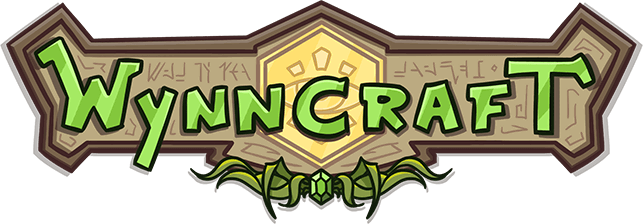
Core Gameplay
Heavily inspired by classics such as Runescape, Wynncraft discards the traditional Minecraft gameplay. Players aren’t meant to punch trees or go mining. Instead, they choose from 1 of five classes (Archer, Assassin, Mage, Warrior, Shaman) and then go on adventures across the handcrafted map. They can join guilds, complete quests, fight bosses and much more. The server has its own complex system for skill points, elemental damage and unique item tiers. In essence, the team managed to create a completely new game within the Minecraft engine.
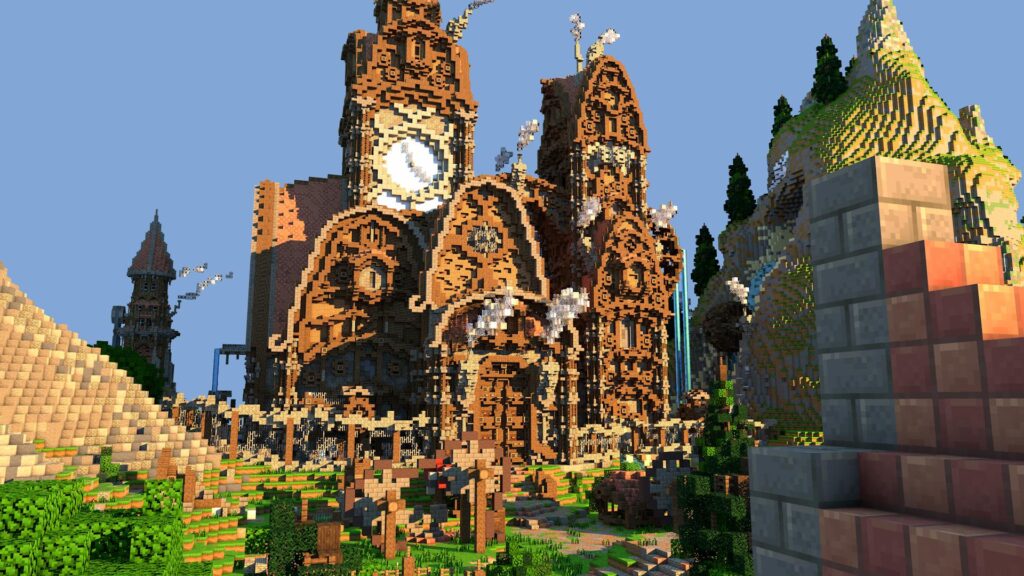
Community and Content Updates
Wynncraft’s approach allowed it to sidestep the competition. It was a very different entity and existed in its own bubble. There were major content updates akin to that of traditional MMO expansions. The “Gavel Expansion” in 2015, the “Corkus Update” in 2017 and the “Silent Expanse” in 2019 each added large new provinces, quests and game mechanics, slowly building upon the lore of the world.
While Wynncraft never reached the peak concurrent player counts of Hypixel or Mineplex, it has had a dedicated and stable community. As of March 2021, over 2.9 million unique players had experienced its world. Its success shows that there exists a sizable audience for long form content in the Minecraft multiplayer ecosystem. In 2017, the server was recognized by Guinness World Records as the largest MMORPG built in Minecraft.
The story of Wynncraft shows that sometimes, you don’t need to chase the norm, you can make a niche product that a small group of people can enjoy, and can be a viable path to success, rather than appealing to the mass market.
Conclusion
The tales of these five servers show that there is no single formula for a successful Minecraft server. The community is diverse enough and massive enough that all these different genres; types of servers can coexist and carve out their own space in the multiplayer landscape (except Mineplex I guess).

